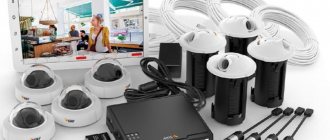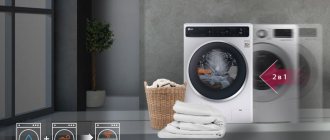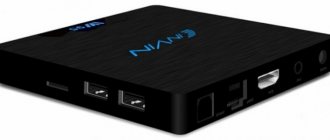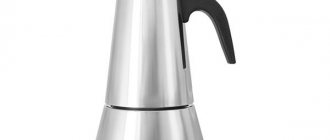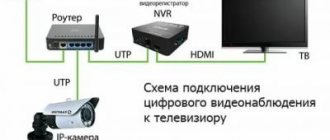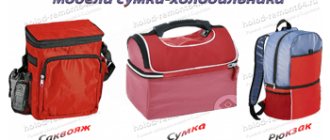Most people who are thinking about buying outdoor CCTV cameras are faced with a lot of unclear questions:
— Which cameras to choose?
— What is the difference between IP and AHD cameras and which standard to choose?
— What components are needed for the operation of a video surveillance system in addition to the camera itself?
— What is WDR, DNR, POE?
— How not to make a mistake when choosing a matrix?
— Will wireless Wi-Fi cameras work adequately?
— What resolution should I choose: 2, 4, 5 or 8 megapixels and how much do they differ from each other?
We will answer all these and other questions in very simple language in this article. We also recommend that you watch the video where we clearly discussed all these issues:
We will also give recommendations on specific models in 3 different price categories from budget to premium. All links will be at the end of the article.
This article was prepared for you by the No. 1 brand in the market of ready-made video surveillance systems ISON. Visit our website www.isoncom.ru where you will find everything you need for video surveillance systems from cameras and video recorders to connectors and uninterruptible power supplies, as well as more than 1,200 types of ready-made sets of video surveillance systems for any task and budget that are intended for installation by the average user and are mounted according to Basically, take it out of the box and plug it into a power outlet. The ISON brand is Japanese quality and the highest technology!
What is WDR?
WDR is a technology that improves the quality of shooting in poor or incorrect lighting conditions. Essentially, buying a CCTV camera without this technology is money down the drain, because... Wherever you place your camera, several times a day it will either be exposed to the light of the sun or, on the contrary, to fall in shadow, and at these moments all the faces in the frame will be darkened and the car license plates will be unreadable.
In the last few years, the concepts of WDR and REAL WDR have also begun to be distinguished. The concept of REAL i.e. World manufacturers began to write this after a large number of Chinese brands, trying to reduce the cost of their products, began to implement this technology in, to put it mildly, low-quality form. Those. a person bought a camera that said it had WDR technology, but in fact this technology did not solve the problem of poor or incorrect lighting.
When buying a camera, be sure to ask the seller whether the WDR technology on board is REAL, or better yet, read reviews or analyze the brand you are buying to see how well it can be considered a quality manufacturer. In the industry of manufacturers of video surveillance systems, just like, for example, in the industry of car manufacturers, there are their own symbols of quality and manufacturers who, in an effort to reduce the price as much as possible, reduce the price of the quality of components accordingly. Symbols of the quality of video surveillance systems are traditionally the brands SONY, ISON, BOSCH or, for example, Panasonic.
Returning to the topic of WDR, we also note that there is a more budget analogue of WDR technology - DWDR, most often found in AHD video surveillance cameras. How much worse it will be compared to WDR depends again on the quality standards of a particular manufacturer. If you choose ISON video surveillance cameras, then WDR technology will always be only REAL, and DWDR technology will be 10% simpler than WDR. If you choose cameras from another brand, do not forget to check these points with sales consultants.
What is the difference between IP and AHD video surveillance?
Are these 2 different standards between which there are no significant differences when it comes to domestic use? for example, video surveillance for home and cottage, car or warehouse. But if, for example, you have the task of deep analytics and connecting to a server, then only IP cameras will cope with this task.
These are tasks such as, for example, installing a camera at the entrance to a plant, connecting it to a server, entering a list of license plate numbers of plant employees into special software, and programming the barrier so that it opens only when a car from the list arrives. I will add here that the cost of such a solution, taking into account the server, software and all components, usually costs several hundred thousand rubles, which also emphasizes its non-domestic use.
The advantages of IP cameras are that their shooting quality is a little better in terms of detail, but at the same time they cost a little more. The advantages of AHD cameras are a more favorable price, the same functions and capabilities in terms of household use from motion sensors to viewing from a phone, and good shooting quality, provided that we are talking about a high-quality Brand.
And one more difference between these two standards that you need to know about is the cable. IP video surveillance is twisted pair, AHD is coaxial cable. I’ll add that now you can also connect AHD cameras via twisted pair cable using special twisted pair adapters. This is convenient in cases where, for example, you installed a twisted pair cable in your home, but then decided to install a more budget-friendly AHD video surveillance system.
On many forums dedicated to video surveillance systems you can find advice that IP video surveillance is more difficult to install and configure due to the need to register IP addresses. But for more than 3 years now, ISON has solved this problem by offering its customers ready-made video surveillance systems with EASY INSTAL technology, which come with a full range of all necessary settings and presets, a formatted hard drive and a ready-made cable with connectors. Those. When choosing such a system, you don’t need to configure or crimp anything, just take everything out of the box and plug it into a power outlet. I will add that all AHD systems of the same brand also come with the same technology.
If you want to delve more deeply into the differences between IP and AHD video surveillance, we recommend watching our video IP or AHD video surveillance 9 differences. I would like to add that I would recommend that you consider both IP and AHD options for video surveillance systems when purchasing.
How to choose the right IP camera
To choose a suitable IP camera for a country house, you should first pay attention to your needs. To do this, you need to answer 4 main questions.
Are you going to install the camera outdoors?
If yes, then you need a device that is waterproof and dustproof. Then you can mount it on a wall, fence or even a tree. This will help keep an eye on the surroundings of your home. Many cameras run on batteries, but some require a power cable. If you choose the second option, you will need to stretch the cable from the camera to the outlet. To do this, you may need to drill a special hole.
Where do you want to store your videos?
The video footage will be useful if your property is stolen or damaged, so it is important that it is preserved. This can be done in different ways:
- Save video to the cloud. Using cloud services, you can view the footage anywhere in the world using a special application.
- Save video to PC or NAS. If your computer is always on, you can store surveillance camera video on it. You can also use NAS or DVR. These are storage devices that can be connected to a network.
- Save video to SD card. The advantage of this method is that you do not need additional devices, but the disadvantage is the limited amount of memory.
How do you want to connect the IP camera to the network?
There are two connection methods: wired and wireless. The camera can be connected to your home Wi-Fi network. In this case, you will not need to lay a cable, but the signal should be strong enough. Wired cameras provide a more stable connection, but are a little more difficult to install.
How wide a viewing angle do you need?
Pay special attention to the viewing angle - the field of view of the IP camera, as well as the image quality. It is determined by resolution. The higher it is, the more detail you will see.
To organize video surveillance of a small area, the viewing angle must be more than 90 degrees and the resolution must be at least 1280x720. For a large area, you will need a camera with a viewing angle of more than 100 degrees and a resolution of at least 1920x1080.
What is POE?
POE is a technology in IP video surveillance systems that provides transmission of both power and video signals over a single cable. If you choose an ISON video surveillance system for yourself, then absolutely all ISON IP systems come with POE technology on board, just as all ISON AHD systems come with DNR technology on board. If you choose a camera from another brand, check with sales consultants about the availability of these technologies in their products.
Pros and cons of IP cameras:
Advantages
The presence of a microphone or the ability to connect it If there is a PoE function, then there are no extra wires Several cameras can transmit a signal over one cable Recording is carried out on a memory card or in the “cloud” The signal can be transmitted over several kilometers (via an optical cable) Wireless signal transmission is possible (via WI-FI)
Flaws
Higher price Maximum cable length 100 meters Delay in video transmission to the monitor by 2-3 seconds Possible freezes and stutters
What is a hard drive and which one should you choose?
And also what is a motion sensor in CCTV cameras, how does it work and how does a regular sensor differ from an intelligent one?
A hard drive is a device that is located in the DVR and on which recording occurs. To understand how much disk space you will need, you need to decide what cameras you will install, how many, what resolution they will be, what brand they will be, whether they will have a motion sensor on board and what compression standard they will have.
By default, most video surveillance systems come with the H.264 compression codec, but for example, all ISON video surveillance systems come with the H.265 codec, which means that your cameras will consume 2 times less hard drive space with the same shooting quality.
Using ISON CCTV cameras as an example, I can tell you the approximate amount of memory consumption for all types of cameras:
- 2 megapixel cameras consume an average of 1GB per hour per camera;
- 5 megapixel cameras consume an average of 1.5GB per hour;
- 8 megapixel cameras with 4k resolution consume an average of 1.8GB per hour.
You can also record not constantly but using a motion sensor. Firstly, it helps to increase the life of your archive, and secondly, it is basic convenience when viewing the archive, i.e. if an emergency occurs at your facility, you will not need to view the entire multi-day archive from each camera, because you will immediately see when and at what time there was movement on your object.
Also, for example, in ISON video surveillance systems, the motion sensors are intelligent, i.e. they can be adjusted by sensitivity, set the area where the sensor is triggered, and you can also receive notifications on your smartphone about the sensor being triggered from anywhere in the world.
To clarify the definition of an archive, let's look at examples on specific models. For example, a video surveillance system with 4 cameras of 5 megapixels ISON GREKO PRO, a popular option in the middle price segment with a SONY matrix, motion sensors and a budget hard drive of 1 terabyte, i.e. 1000GB will have an archive of about 30 days, subject to recording by a motion sensor and the traffic intensity of an ordinary private house.
If for some reason you want to record only constantly, then the archive will be about a week, although we do not recommend recording this way, because... There is no point in writing emptiness. The same system but with 8 megapixels ISON GROT X with the same matrix, motion sensors, zoom and the same disk will have an archive of about 3 weeks based on the motion sensor.
Additionally, I note that specifically the ISON models work in such a way that after these 3 weeks are over, the disk will gradually begin to overwrite itself. If you plan to install cameras from another brand on your property, then do not forget to check with the seller all of the above nuances.
How not to make a mistake when choosing a street camera matrix?
This is one of the most important questions. The matrix is what is inside the camera and both the quality of shooting and the durability and correct operation depend on its quality. In an effort to make their cameras as cheap as possible, many manufacturers mislead their customers by offering to buy a 5 or 8 megapixel camera at a low price, which is due to the low quality of the matrix. Because of this, a 5 or 8 megapixel camera may actually have worse shooting quality than cameras from the 90s.
This is a current problem in the CCTV market.
We recommend choosing cameras with SONY matrices, as well as all their derivatives from Sony EXMOR to SONY EFFIO. These matrices provide the optimal price/quality ratio. Let me put it simply, that everything that is cheaper has questions about quality and reliability, and everything that is more expensive has questions about pricing and the feasibility of such a purchase.
Along with the quality of shooting, the matrix also determines the reliability of the camera. Simply put, 90% of all camera breakdowns and defects are related to the matrix. A good camera with a good sensor should last 10 years when used 24/7.
I will also note that, as in the case of counterfeits for WDR, counterfeits for SONY matrices have also appeared. Unscrupulous Chinese manufacturers noticed that cameras with SONY matrices had become one of the most popular on the world market and began to counterfeit them, which again caused indignation among consumers who bought a camera with the inscription SONY matrix, but in fact the picture was fuzzy and rippled. After which, manufacturers supplying their cameras with original matrices began to add the mark SONY original matrix to the characteristics.
If you choose ISON cameras for yourself, when selecting in the filter, check the box for SONY original matrices to see cameras with these matrices.
If you choose cameras from another brand, be sure to check with the seller about the origin of the matrices of the model you like.
What is cloud recording, how much does it cost and how long is it necessary?
And also how to organize uninterrupted operation of cameras during a power outage and what is needed for this?
Cloud recording is a paid technology that allows recording to a remote server. This is convenient in cases where, for example, you are afraid that your video surveillance system will be stolen and in the case of recording to the cloud, you will be left with an archive.
But such a service requires a monthly subscription fee, which is not small, starting from 300 rubles per month for 1 camera. Those. for example, an archive for a system with 8 cameras will cost about 2500 rubles. per month for the smallest weekly archive or about 30 thousand rubles. in year.
At the same time, there is a life hack on how to get the same duplication effect and not pay a subscription fee. The developers of ISON video surveillance systems took into account the desire of many customers not to pay subscription fees to cloud services and proposed a technology that allows duplicating recordings from one DVR to another.
As an example, let’s assume that you installed the ISON GREKO PRO system already mentioned above and if you are afraid that your recorder will be stolen, then you buy another one, the same as the one included in the package, install it on another object at home, at work, at the dacha, connect both recorders to the Internet and set up archive duplication.
I would like to make a separate reservation that to perform such an operation as duplicating a record either to the cloud or to another registrar, you need a good Internet channel. If we take the same Greko PRO system with 5 megapixels and 4 cameras as a basis, then the Internet speed should be at least 30 Mbit, and if we take the ISON Grot X system with 8 megapixels, then at least 45 Mbit.
Also, to carry out such an operation as duplicating a recording to another recorder, you must have static IP addresses at both sites where the DVRs are installed. If you don't know what it is, then call your provider, i.e. company that provides Internet at your site and say that you need a static IP address and they will set it up for you.
I will also answer a popular question: “Is it possible to record to the cloud not to a paid cloud service but to a free one, for example Yandex or Google Drive?” — Alas, these tasks require only special services.
There is another popular and most budget-friendly way to solve the problem of possible theft of a recorder: hide it in a secret place or safe, after installing an uninterruptible power supply on it so that attackers cannot turn off the power to your cameras.
— What components are needed for the operation of a video surveillance system?
And also how to organize video surveillance where there is no Internet?
There are 2 options: The standard option requires a camera, a bracket for it, fasteners, a cable with connectors, a DVR with a hard drive, and power supplies.
ISON is the No. 1 company on the market in terms of the number of ready-made video surveillance systems sold. You can view the catalog of ready-made systems on the website www.isoncom.ru in the ready-made kits section, put the number of cameras you need in the filter on the left, select the resolution you need or do not select anything to consider all the options.
You can also choose the type of camera, outdoor or indoor, or if, for example, you need a combined system where some of the cameras will be outdoor and some will be indoor, then choose any system you like and in the configurator above the buy button you can choose to replace the number of cameras you need with indoor ones.
Those. for example, you need a system for 4 cameras with three outdoor and one indoor camera, select the appropriate option and in the configurator choose to replace 1 camera with an indoor one.
Also in the same configurator, for each model of a ready-made video surveillance system, ISON offers you, if necessary, to choose replacement components. For example, you need a system for expansion. For now you want to install 4 cameras, but in the future you plan to install 3 more, in this case, choose to replace the DVR with an 8-channel one. Or you are not satisfied with the standard 1TB hard drive that provides the archive in your system, you can also choose to replace it with a 2.3, 4 or 6 terabyte drive, thereby increasing the size of the archive to several months.
Also in the configurator you can choose to replace the cable coils with longer ones.
Additionally, in the main filter you can select the option of having a viewing function from your phone, as well as 3g/4g support for objects where there is no wired Internet, the presence of a motion sensor, viewing angle, the presence of WDR technology, of course it will be real wdr, MATRIX, SHOOTING RANGE IN METERS , PRESENCE OF ZOOM, and so on.
Also, on the site in the lower left corner there is a convenient assistant, by clicking on which you will be asked to answer 10 simple questions about your property and you will immediately see all the options that suit you.
The above composition is basic, i.e. it is enough for the functioning of the video surveillance system, but there are also additional peripherals that are often purchased along with the system, for example, uninterruptible power supplies, they provide power to the system during a power outage from several minutes to several hours depending on the selected uninterruptible power supply model, mounting boxes and bases for mounting cameras.
Mounting boxes are standard plastic boxes where the camera connector is hidden from moisture. Bases for mounting cameras are a more universal device in which you can not only hide a connector but also attach a camera to it, routers for connecting the DVR to the Internet via a 3G/4G modem. If your facility does not have wired Internet, then you will separately purchase the USB modem itself; they are sold only in cell phone stores; you will also purchase a specialized router, video surveillance signs, microphones, monitors, and so on.
The second option for assembling the kit assumes the presence of only a camera with a slot for an SD card and its direct connection to the Internet. In this case, you will need a camera with a bracket, fasteners for it, an SD card, a power supply and a cable with connectors for connecting to the router. This method is suitable for small objects where 1 camera will be enough, for example, a construction site and a small archive for several days. I would also like to note that this method is considered more difficult in terms of self-installation, because requires a number of IP settings on the camera and the router to which it will connect. If you are interested in this method, be sure to watch our video “How to connect an IP camera all ways.”
Criteria affecting image quality
Contrary to popular belief, a large number of megapixels is not a determining factor for good image quality, but is only one of the elements that ensure it. Of course, there is definitely a difference in picture quality between standard analog and IP, and it is quite significant, but speaking of the modern market and the race of manufacturers for megapixels, before choosing between 2 and 8 megapixels, you should think carefully, because often good IP camera with 2MP resolution for 10 thousand rubles. gives approximately the same quality as a more expensive one with higher values of this parameter.
There's also almost no noticeable difference between 720p and 1080p, despite twice the number of pixels. In addition, when increasing the resolution, parameters such as camera sensor sensitivity and wide dynamic range (WDR) capability may suffer, which also affect the quality of the resulting image.
Camera sensitivity and lighting conditions
Camera sensitivity plays a big role in 24-hour video surveillance. The higher its sensitivity, the better the image quality and the more opportunities for shooting in twilight and darkness.
Nowadays, almost all cameras are equipped with IR illumination, which makes it possible to conduct video surveillance even in complete darkness. Also, if necessary, you can equip the camera with an additional infrared spotlight, which differ in range and illumination power, and viewing angle.
Camera sensitivity refers to the minimum amount of light (light level) at which the camera can “see” what is happening. The sensitivity of a video surveillance camera is usually measured in units of illumination - lux. As an example, we give a small table with approximate values of lighting units typical for certain places and conditions.
When choosing a video camera, be sure to look at the specifications for what lighting conditions it is suitable for, and select it to suit your needs, having first measured the level of illumination in the place of intended installation using a lux meter. For round-the-clock operation, you will need a camera with a sensitivity of at least 0.01 lux.
In most cases, when installing cameras outdoors, the lighting will constantly change throughout the day. In order to obtain the same picture in such changing conditions (without glare in bright sun or dark image in unexpectedly bad weather), it is necessary to clarify that the camera has automatic adjustment of the lens opening - aperture. By closing or opening the aperture in automatic mode, such cameras maintain the amount of light entering the matrix within constant limits, which eliminates the appearance of overexposed or dark images under constantly changing weather conditions and time of day. Therefore, before choosing an outdoor CCTV camera, be sure to check the fact that it has automatic iris adjustment.
Wide dynamic range available - WDR
Thanks to the presence of WDR technology in CCTV cameras, it has become possible to obtain a “uniform” image in conditions of large differences in the light levels of various objects in the frame. For example, a person is facing the camera, and is illuminated from behind by bright sunlight at dawn or sunset - a conventional camera will adjust to the light level of the background, thereby darkening the person's face, or it will adjust the aperture, adjusting to the light of the face, and in this case the background will remain heavily overexposed. A device that supports wide dynamic range will allow you to get mostly the same level of illumination for both the face and the background, so all the details will remain visible and there will be no deep shadows or overexposed areas.
WDR action example
Recently, WDR technology has begun to be used much more often. If previously wide dynamic range was used only in premium devices, now, thanks to the emergence of inexpensive sensors that support this function, it has begun to be implemented in inexpensive cameras. But don’t be fooled by the presence of support for this parameter in the camera’s description - true WDR is still used only in expensive cameras, in most budget cameras - only its semblance, described by the manufacturer in confusing terms, and “wrapped in an attractive package.”
Color or black and white camera?
Updating information! For the most part, today all video surveillance cameras are produced in color, with the ability to switch to black and white mode at night, so the story about the choice between b/w and color in this part of the article has lost its relevance.
When choosing a camera for video surveillance, you need to decide whether in your particular case the capabilities of a monochrome camera are enough, or do you still need a color image?
The advantages of black and white cameras, first of all, include their low price compared to color models. Also, monochrome cameras under poor lighting conditions are able to produce a higher quality image without noise, while the image from a color camera under the same conditions will be noticeably “noisy”. However, manufacturers took this fact into account and began to produce cameras that shoot in color during the day, and when darkness falls, they automatically switch to monochrome mode.
The main disadvantage of black-and-white cameras is that they work only in monochrome mode, while color cameras are capable of transmitting more information about the object of observation - this can be attributed to their main advantage.
The disadvantage of color cameras is their higher price compared to monochrome ones.
Day/night mode and a few words about IR illumination
Camera with automatic color/monochrome mode switching and powerful IR spotlights Falcon Eye FE-IS 91/100 MLN Patrol. Price ~ 9-10 thousand rubles.
Thus, if you plan to conduct video surveillance both day and night, and want to receive information about all the details of what is happening, including color, choose camera models with day/night modes, which automatically switch to monochrome mode when darkness falls. A necessary point when choosing cameras for night video surveillance is the presence of infrared illumination, which is completely invisible to the human eye, but allows the device to monitor even in complete darkness.
The operating distance of IR illumination varies between 5-50 meters, but with the use of powerful IR illuminators it can reach longer distances. The backlight quality may vary from camera to camera. There are cases when the angle of illumination does not coincide with the viewing angle of the camera lens, and a bright, overexposed spot forms in the center of the frame. In some cameras, the power of infrared illumination can be adjusted depending on what is happening in the frame, thereby eliminating excessive illumination of the subject and the appearance of flare in the frame. Therefore, when choosing a camera for 24-hour surveillance, it is necessary to take these features into account.
Downward trend in prices
Today, in a competitive race, most manufacturers deliberately reduce the price of their equipment in order to stimulate demand and weed out competitors. Of course, this is to the benefit of the buyer, so when choosing, you should pay attention to this parameter and not look for a catch in a reduced price - today it is quite possible to buy a good camera with decent resolution and support for modern technologies for a low price.
Among other things, cameras can be wired or wireless, cased or open-framed, miniature or regular, rotating, etc., and the selection of a video surveillance camera according to its parameters will depend only on the goals and specific tasks that are planned to be solved with the help of surveillance. Also, don’t be lazy and read reviews about the camera model you are planning to buy - this way you will protect yourself from a low-quality product, or, conversely, confirm your choice in case of positive comments. Good luck in your choice, we hope that this material will be useful to you!
With this they read:
Night CCTV camera
Choosing a hard drive for video surveillance
Buying a 3G/4G GSM signal amplifier: checking the signal, selection criteria and review of models
Ready-made video surveillance kits for various needs: tips for choosing with examples
Did you like the article? Share with friends on social networks!
What resolution should I choose: 2, 4, 5 or 8 megapixels and how much do they differ from each other?
And also what is HD, FULL HD, 2K and 4K?
Today there are many camera options from 2 to 8 megapixels. There is no exact answer to the question of how many megapixels to choose for a private home, for monitoring a car or, for example, for a warehouse, because In this matter, everything depends on the budget.
If your budget allows, then take 8 megapixel cameras, today these are the best cameras and the picture will be as clear as possible, if it does not allow, then the average price option is 5 megapixels, budget options are from 2 to 4 megapixels. Links with prices for options from all 3 categories will be in the description.
Here it is worth noting the above point regarding matrices; it is important to look not only at the resolution in megapixels but also at the matrix with the lens, because Buying an 8 megapixel camera with a low-quality sensor does not mean buying a good camera.
We are also often asked whether cameras, for example 4 and 5 megapixels, differ much in quality. The answer is simple: 1 megapixel is 1 million pixels, i.e. 1 million dots on the screen, i.e. in cameras with 5 megapixels, there are 1 million more pixels and this is 20%, i.e. a 5 megapixel camera will see 20% better than a 4 megapixel camera, respectively, an 8 megapixel camera will see 2 times better than a 4 megapixel camera, of course, provided that we compare cameras with the same matrices, lenses and the same brand.
The difference between 4 and 5 megapixel CCTV cameras is 20%
Here we will answer the question of what HD, FULL HD, 2K and 4K are. These are terms to define essentially the same resolution.
HD is the equivalent of 1 megapixel, this resolution has already been discontinued by almost all brands as outdated and low-quality video surveillance;
FULL HD is 2 megapixels, a budget option;
2K is 3 to 5 megapixels;
4K is an 8 megapixel premium option;
Which outdoor CCTV camera to buy
Our TOP of the best outdoor CCTV cameras includes models from different price categories and with different technical characteristics. When organizing surveillance outside the premises, the climatic conditions of the region should be taken into account. So, for residents of regions where it is too hot in summer and too cold in winter, models that can withstand strong temperature changes are most suitable - Hikvision DS-2CD2123G0-IS and Dahua DH-HAC-HFW1220SP-0280B. And for cities with constant rain, the best options would be the Dahua DH-IPC-HDW1431SP-0280B and DH-IPC-HDBW1431EP-S-0360B video cameras, since they are moisture-proof.
Will wireless Wi-Fi cameras work adequately and what are the disadvantages of this type of camera?
Wireless Wi-Fi cameras have a disadvantage, which is clear from the name - Wi-Fi transmission, which has its own limitations. The situation is approximately the same as with your phone: when you are sitting at home, your Wi-Fi reception is good, but as soon as you go out into the entrance, the connection disappears. Those. Such a signal is strongly muffled primarily by walls.
The second disadvantage of such cameras is the price; Wi-Fi cameras, by definition, are more expensive than wired ones, which will negate the attempt to save on buying a cable. The third disadvantage of wireless cameras is that there must be an outlet at the installation site from which the camera will receive power. The fourth disadvantage is the ability to jam the Wi-Fi signal, thereby disabling your cameras.
But they also have a significant advantage: the absence of a cable between the recorder and the cameras.
Of the worthy models, I can recommend the ISON AIR systems; they have a built-in protection system against all types of interception and jammers, as well as their own built-in Wi-Fi module that allows you to receive signals from cameras without the use of third-party routers, which again strengthens their signal and improves protection from jammers.
Such systems operate with signal transmission up to 90 meters in conditions without obstacles, for example, a production workshop where there are no walls or other Wi-Fi networks. If we are talking about a standard private house, then such a system will work stably with 1 or two walls.
Be sure to watch our video review of these models, where we talked in detail about which objects this system is suitable for and which it is not.
ISON also has industrial wireless systems designed for large facilities where there is a need to transmit a wireless signal over kilometers.
Also, don’t forget to watch our video review and tests of these systems to understand whether they are suitable for your facility or not.
What is the difference between a fixed lens and a varifocal lens and which one should you choose?
How does electronic zoom work and can it be controlled remotely?
A fixed lens is a standard lens without a zoom, while a varifocal lens is a lens with zoom capabilities.
Let's look at all the options from the most budget to the most expensive:
- The most budget option is a 3.6mm lens, its disadvantage is not the maximum viewing angle, which, depending on the matrix, will be from 60 to 100°;
- Next comes a fixed 2.8mm lens, depending on the matrix it gives a viewing angle of up to 120°. For example, in the above-mentioned ISON AIR or ISON GREKO PRO systems, there are just such lenses that give the cameras a viewing angle of 120°. This is the maximum viewing angle for street CCTV cameras; there are more cameras that only have 360° fisheye cameras, but they are very highly specialized and are only suitable for the format of shopping centers.
- Next comes a 2.8-12mm varifocal lens, which makes it possible to aim a 4x zoom, the disadvantage of such a lens is that the zoom is controlled here by a hexagon on the camera itself.
- Next comes one of the most popular lenses nowadays, electronic. This is the same variable lens, only it can be controlled remotely from a phone, tablet or computer anywhere in the world. Such lenses are supplied, for example, to cameras of the ISON GROT X, ISON KOVO PRO, ISON OZON and many others.
- Well, the most expensive are rotating PTZ lenses; in addition to on-board zoom, such cameras also rotate 355° left/right, up/down. Also, if we are talking about ISON PTZ cameras, then they come with patrol tour technology, i.e. you can set the camera to automatically rotate around your subject.
The best outdoor security cameras
Video recording devices are popular these days for good reason. Their ability to provide full protection to an office, home and any other building is actively used even despite the fact that several decades ago such luxury was observed only at military and commercial facilities.
The modern market offers customers a wide selection of cameras for outdoor installation. Our experts examined the best of them in detail.
Hikvision DS-2CD2623G0-IZS
The network outdoor video camera, the leader in our rating, has a rectangular shape. It attaches perfectly to the wall with 4 screws. To protect from the sun and precipitation, a small visor is provided here.
Reviews about the device are most often positive, since it belongs to the anti-vandal category, has a 2 megapixel resolution and optimal viewing angles. The maximum rotation angle here is 360 degrees, tilt - 90 degrees. Additionally, the manufacturer has provided an IR filter, a noise reduction system, and a separate slot for memory cards. The average cost of a Hikvision video camera is 13 thousand rubles.
Pros:
- presence of night mode;
- backlight compensation;
- excellent motion sensor performance;
- work at temperatures from -40 to +60 degrees;
- light weight;
- audio and video outputs.
The only downside is the fragile body.
Dahua DH-IPC-HDW1431SP-0280B
The outdoor CCTV camera is equipped with a round lens. It must be mounted on the ceiling to get the best quality image.
The body of the product is fragile and easily soiled, so it should be installed carefully.
The IP model has a noise reduction system, as well as backlight compensation. It is equipped with an IR filter, which makes it great for shooting at night. You can buy a video camera for 11 thousand rubles. average.
Advantages:
- correspondence between price and quality;
- no noise on the recording;
- fast motion sensor;
- minimum weight;
- optimal power consumption.
drawback is the weak fastening, due to which the structure may accidentally fall off the surface.
Hikvision DS-2CD2023G0-I (2.8 mm)
The outdoor video camera with Wi-Fi is made in the shape of a cylinder. It can be installed both on the ceiling and on the wall - the rotating mechanism allows you to see the entire situation from any location.
Positive reviews about the camera come due to its technical features. The main points are: viewing angle 118 degrees, minimum illumination for color shooting 0.01 lux, rotation angle 360 degrees, weight 400 g. The operating temperature of the device is between -minus 40 and up to +60 degrees. The price of the gadget is 7 thousand rubles.
Advantages:
- ease of installation;
- the motion sensor is triggered instantly;
- the ability to use a memory card;
- PoE power supply;
- high frame rate;
- ease of operation.
drawback - not the best focus.
HiWatch DS-I122 (2.8 mm)
A vandal-proof, dome, round-shaped outdoor CCTV camera with a stand is sold in white. It has a classic appearance and is hardly noticeable in its installation location.
An outdoor video camera with a motion sensor takes 25 frames per second at maximum resolution. The viewing angle here does not exceed 93 degrees. IR illumination operates at a distance of 15 meters. The operating temperature of the gadget ranges from 40 degrees below zero to 60 degrees hot. The structure weighs exactly 500 g. It is quite possible to buy the model for 3,500 rubles.
Pros:
- reliable anti-vandal system;
- availability of Ethernet;
- low power consumption;
- Possibility of power supply from both adapter and PoE;
- good focusing.
People consider the strong noise in the video in windy weather to be a disadvantage
Dahua DH-HAC-HFW1220SP-0280B
A cylindrical video camera also often receives positive feedback regarding its appearance. It can be found on sale exclusively in white. The body here is matte and slightly rough.
The wireless outdoor video camera operates with a 2 MP matrix. It has a night mode and IR illumination. The device weighs about 350 g. Other characteristics of the device for street photography: 18 IR LEDs, horizontal viewing angle is 106 degrees, minimum illumination reaches 0.02 lux. The price of a video camera is approximately 2000-3000 rubles.
Advantages:
- fixed focus;
- good illumination range;
- high frame rate;
- excellent matrix;
- the ability to obtain both color and b/w images.
Hikvision DS-2CD2123G0-IS (2.8 mm)
The video camera for outdoor video surveillance is made in a round shape. It can only be found on sale in white. It must be mounted on the ceiling, since in this way it can cover the entire surrounding area.
The motion sensor model has a fixed focus lens. Additionally, there is an IR filter and a slot for a flash drive. The minimum operating temperature is 40 degrees below zero, the maximum is 60 degrees above zero. You can buy the device at a price of 8 thousand rubles.
Advantages:
- WDR support;
- IP67 type protection;
- fast operation of the motion sensor;
- wide viewing angle;
- possibility of obtaining color images.
Dahua DH-IPC-HDBW1431EP-S-0360B
The rating of the best outdoor surveillance cameras is completed by a round model, made in black and white. It is designed for mounting on the ceiling or wall and is anti-vandal.
Main features of the outdoor video camera: PTZ system, night and day shooting modes, RTSP and ONVIF support, IP67 type protection. In addition, it is worth noting the 4 MP matrix and the presence of IR illumination for better performance in the dark. Also, positive feedback from users is often received regarding the weight - it is only 300 g. The average price of the product is 11 thousand rubles.
Pros:
- anti-vandal system;
- excellent work with minimal illumination;
- optimal voltage;
- high protection class;
- high-quality IR illumination;
- sufficient viewing angles.
The only downside here is the minimal number of additional functions.
Which camera to choose to avoid winter and autumn fogging?
And also what is protection class IP 66 and which camera to choose for frosts below -40°?
— Periodic fogging of the lenses of CCTV cameras is another headache for regions with a variable climate, which essentially makes up 95% of the territory of the Russian Federation.
Many manufacturers do not provide desiccant absorbers in camera housings; this problem can also arise simply due to the poor quality of the housing and non-compliance with IP66 standards and dust and moisture protection standards.
In fact, you can understand whether your camera will fog up, whether it will withstand the heaviest rain and whether it will work in extreme cold only by the reviews of people who have had such a camera for at least a year.
Regarding the brands Bosch, ISON, SONY, we can say that these are one of the few brands that, more than 5 years ago, presented a solution to this problem for Russian residents in the form of built-in dehumidifiers, this is a special substance inside the camera body. Such cameras will work without fogging in any weather and in any climate.
Regarding ISON outdoor cameras, I will add that they will work at temperatures down to -60°. Regarding Bosch and SONY cameras or other brands, check the operating temperature conditions with the sellers for specific models, because It may be different for different street models.
Which CCTV camera to choose for the street
Now we should move on to the next question: which CCTV cameras are best for the street. As mentioned above, the answer lies in your tasks , since it is one thing if you need to equip the territory of a country cottage , and quite another thing if the video camera is located in front of the entrance on the street , and must “see” not only suitable people, but also the numbers of those arriving cars
PTZ camera ideal for corner areas
Let's start with the fact that a camera located outdoors and exposed to the environment, for example, rain, snow, dust, and so on, must be certified according to the standard of dust and water resistance (CHIP wrote about this not long ago). Secondly, we cannot turn a blind eye to the fact that the times when our fellow citizens smashed light bulbs in entrances have not yet completely passed everywhere, so it would not be amiss to provide for this factor by installing an anti-vandal camera . In addition, it must be resistant to temperature changes. Typically, outdoor cameras can operate in temperatures from -40 to +50 C, but for hotter regions it makes sense to buy a video camera that is more resistant to heat. Of course, it will cost more.
A visor protects the camera from light exposure. Cylindrical chamber
The next, no less important parameter for an outdoor CCTV camera is sensitivity . It affects the likelihood of image flare and noise. In inexpensive models, the camera lens is protected by a visor.
Based on the type of design, external cameras are divided into rotary, dome and cylindrical . With the first, everything is more or less clear: this type of camera is very convenient if you need to organize video surveillance of a corner plot.
The roofs of houses in Russia are equipped with dome cameras
The motion sensor will react to the person in the frame, and the camera itself will follow him.
Dome cameras are good when you need to organize panoramic surveillance . This is, of course, convenient, but you must keep in mind that the wider the viewing angle, the lower the image detail. On the other hand, such devices are indispensable when organizing video surveillance in open areas, for example, on roofs.
Another option for installing dome cameras
Bullet cameras are very convenient for street surveillance: although they are quite large and noticeable, their body is resistant to vandalism.
How does regular infrared night illumination differ from LED illumination and which one should you choose?
LED illumination is a more modern format of night infrared illumination, which has replaced conventional illumination and is characterized by higher quality of infrared light and reliability.
Because A typical problem with conventional IR illumination based on r5 infrared diodes, which we have already discussed more than once in our reviews, is an extremely short service life. In fact, by the end of the first year of operation of such cameras, the night illumination will already be partially burnt out.
Check with the seller what type of night illumination is on the cameras you like, old or new LED. All ISON cameras as of 2021 already have LED backlighting.

